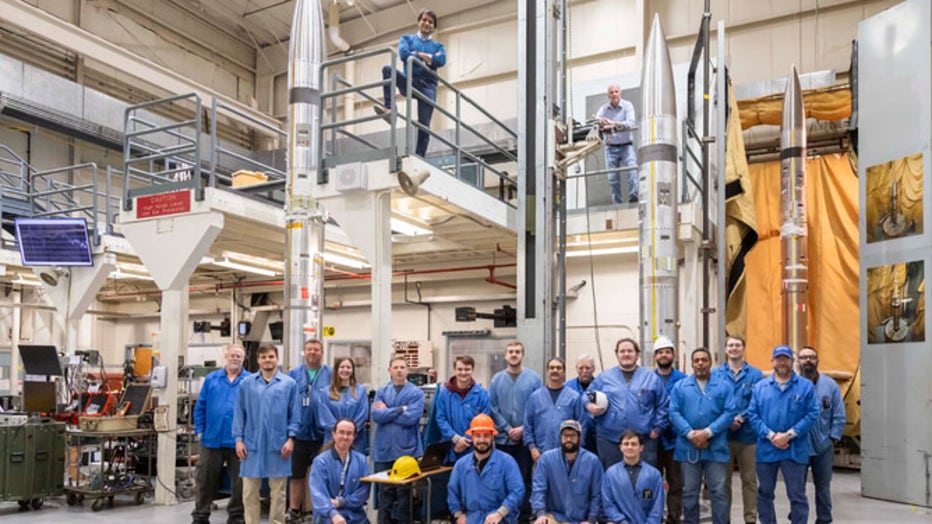NASA to launch rockets into moon’s shadow during April solar eclipse
Eye protection for April's total solar eclipse
If you’re among the millions of people who will get the chance to witness April’s total solar eclipse, you’re going to want to use eye protection. Vitreoretinal surgeon at New York Eye and Ear Infirmary of Mount Sinai Dr. Avnish Deobhakta joined FOX Weather on Sunday to explain the dangers of viewing the eclipse without proper eye protection.
WALLOPS ISLAND, Va. - When the total solar eclipse passes over North America on April 8, the sights of the Moon and the Sun will not be the only features flying high above Earth - NASA is planning to launch a series of rockets to study the impacts the event will have on the atmosphere.
The space agency said three rockets will launch as part of the Atmospheric Perturbations around Eclipse Path (APEP) mission from NASA's Wallops Flight Facility in Virginia.
The rockets will be tasked with taking observations of how the sudden drop in sunlight affects the ionosphere.
"Understanding the ionosphere and developing models to help us predict disturbances is crucial to making sure our increasingly communication-dependent world operates smoothly," said Aroh Barjatya, a professor of engineering physics at Florida’s Embry-Riddle Aeronautical University campus.
The ionosphere is between 55 to 400 miles above the ground and is essentially where Earth’s atmosphere meets space.
Many Earth-orbiting satellites call the region home, and according to NASA, it is important for radio and GPS signals to bounce off the ionosphere to reach their destinations.
TOTAL SOLAR ECLIPSE FORECAST SHOWS WHO HAS BEST CHANCE FOR CLEAR SKIES ON APRIL 8TH
"If you think of the ionosphere as a pond with some gentle ripples on it, the eclipse is like a motorboat that suddenly rips through the water," Barjatya previously stated.
Rockets were previously used to study the effects from October’s annular solar eclipse.
According to the researchers, the use of rockets can be carefully planned out to be in the path instead of relying on satellites, which may not be at the right place at the right time.
The rockets won’t be the only instruments being used to monitor effects caused by the total solar eclipse. Researchers are planning to release high-altitude balloons and deploy radar to study atmospheric changes.

Photo of the APEP sounding rockets and the support team after a successful assembly (NASA/Berit Bland)
FAA WARNS OF IMPACTS TO AIR TRAVEL DURING SOLAR ECLIPSE
More than 30 million Americans are estimated to live in the path of totality that will travel from the central Pacific to the eastern Atlantic.
In any one specific community, the complete blockage of the Sun by the Moon will not last more than a few minutes.
The next widespread total solar eclipse over the U.S. is not expected to happen until 2044, so scientists will use all the tools at their disposal to collect as much data as possible.
"Understanding the ionosphere and developing models to help us predict disturbances is crucial to making sure our increasingly communication-dependent world operates smoothly," Barjatya stated.
LINK: GET MORE ON THIS STORY FROM FOXWEATHER.COM

